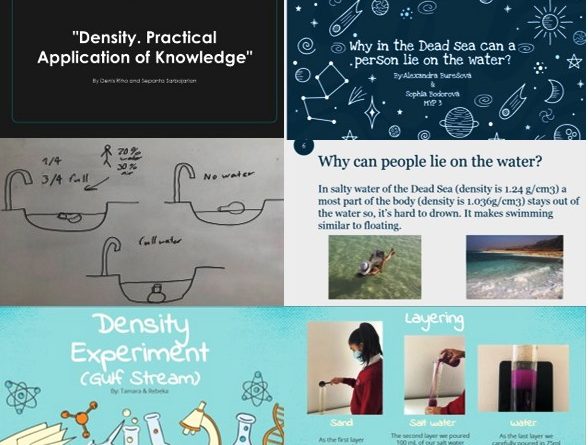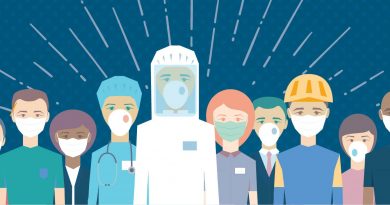OPEN HOUSE Experimental Physics
“Why do children study so much in school? Why do they need integrals, trigonometry, thermodynamics, electronic configurations of atoms, microscopic cell structure, etc.? Where in life can physics, chemistry, mathematics be useful?”
Whether or not students go into scientific fields, the skills and abilities developed in the process of learning are essential and universally applied to many professional areas.
The development of abilities goes from simply obtaining information to understanding its logic, establishing cause-effect relationships, and integrating with another knowledge. In this process, it is important to learn:
- how to ask the right questions,
- make assumptions,
- find suitable methods for solving the problem,
- choose suitable materials,
- process the obtained data with high quality and versatility,
- integrate them,
- find and eliminate obstacles that have arisen,
- anticipate the possibilities and
- consequences of the practical application of the knowledge gained.
This approach is at the heart of the program that EISB implements. It allows us to systematically monitor the level of formation of educational competence of students when they perform various educational and extracurricular activities and, through effective feedback, find individual ways to successfully improve this level.
Let’s take a look at specific examples:
Density is the topic that proposed as a project activity or a small research. The students’ approaches to solving this issue were different.
Denis and Sepanta called their project “Density. Practical Application of Knowledge”. In their work, they briefly explained the concept of “density” and moved on to solving practical issues.
– How to determine the density of a stone (any solid object) using water?
What prompted the guys to come up with such an idea: the story with Archimedes and the crown of Hieron, personal life experience, or something else? Anyway, the students practically applied their knowledge in the new situation and achieved the goal.
– Why do people float on water? To answer this question, Denis and Sepantа required some knowledge from biology and physics. Putting their independent experiment in a school laboratory (using what caught their eye for this), the students proved that the buoyancy of an object depends on both the amount of air in it and the salinity of the water. Perhaps examples from the world of nature and technology would be appropriate here. For example, the presence of a swim bladder in fish, air sacs in birds, the ability of submarines to surface and sink …
However, everything (including the development of ideas and thoughts) requires its own time and place. Denis and Sepanta are on the right way and very soon the practical aspects of knowledge will become an integral part of their educational skills.
Alexandra and Sophia in their study answered the question “Why in the Dead Sea can people float on the surface of the water?” Indeed, why is it much more difficult to stay on the surface of the lake than on the surface of the sea, especially the Dead Sea? Is it because the sea water is salty? But we remember that science likes precision, likes proof.
The girls began their research by solving the Winnie-Pooh Problem. The teddy bear decided to feast on honey from the barrel and fell into it. However, he did not drown. Why? You can get the answer to this question by watching the girls’ presentation.
To explain this incident, Alexandra and Sophia required precise mathematical calculations and the ability to present information in the form of a graphic drawing. As a result of solving this problem, another question arose: What happens to a person in water of different chemical composition?
To answer this question, the girls conducted an experiment with floating eggs. However, first they had to calculate the salinity of the water necessary for the experiment. This required knowledge from geography, chemistry, mathematics; correct use of formulas and conversion of some units of measurement to others. Having calculated the density of eggs and knowing the density of the human body, the salinity of the Dead Sea water, the students were able to explain the reason for free lying on the water, and have achieved their learning goal.
“Density. Experiment. Gulf Stream.” Such an unusual name was given to their research work by Tamara and Rebeca. After reviewing the problematic issue “Can we show the difference in the density of water that can be found around the Gulf Stream in a test tube?” What does Gulf Stream have to do with Density? We will get an explanation by reading the hypothesis put forward by the girls.
I have written about the students’ approaches to understanding the Gulf Stream problem in one of my articles before. Tamara and Rebeca continued their research on the problem and decided to experimentally prove (first of all to themselves, satisfying their curiosity) that indeed, a change in the density of the Gulf Stream and Labrador waters can radically change the climate in the Northern Hemisphere. After performing numerous mathematical calculations, preparing in detail everything necessary for the experiment, the girls achieved their goal, confirmed their hypothesis: different densities of waters lead to the formation of layers.
Were the students satisfied with the results of their work? Definitely. However, they noted the need to complement the experiment.
Now the girls are thinking about how to experimentally show that the collision of two water streams with the same density, but different temperatures, can lead to a change in their trajectory.
It’s a pleasure to work with such students.
In my next article, we will talk about student projects in chemistry and I will introduce their discoveries.




